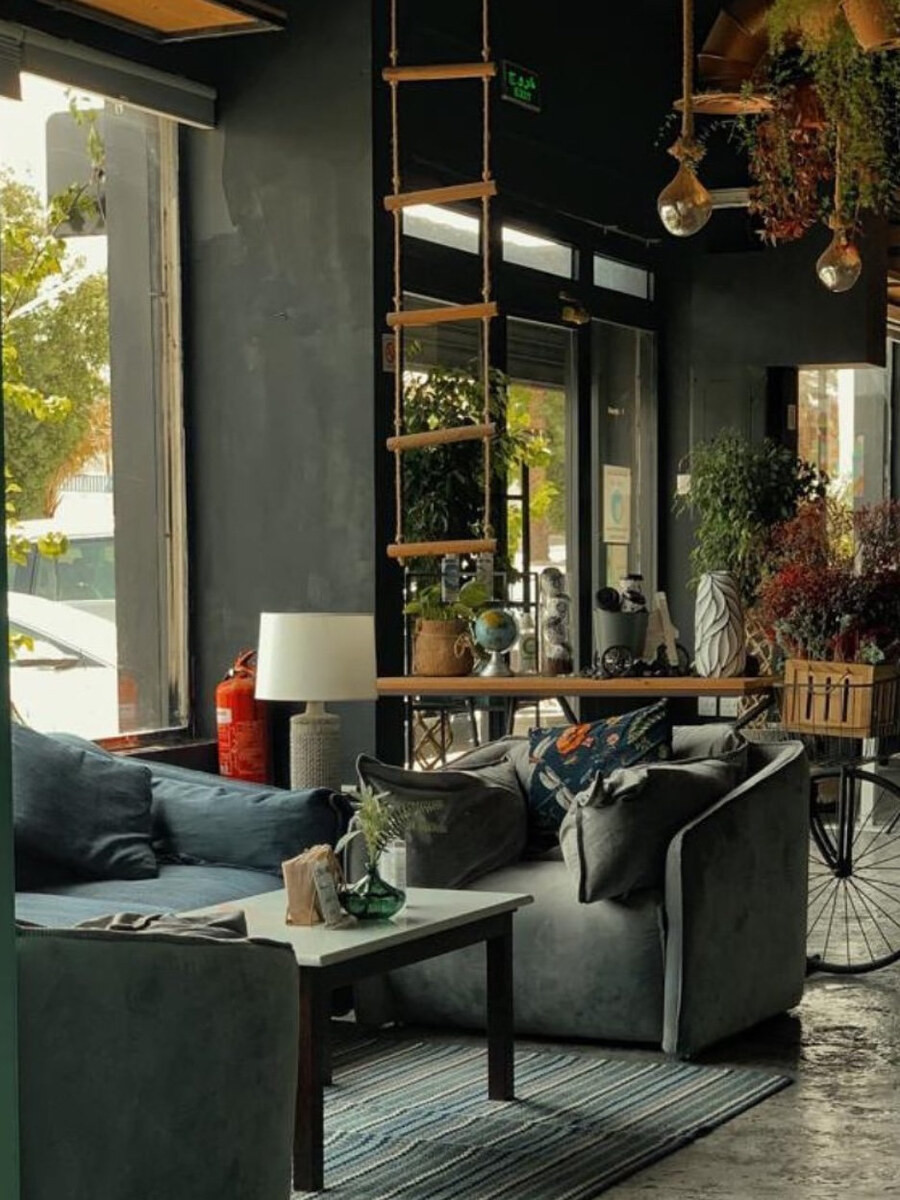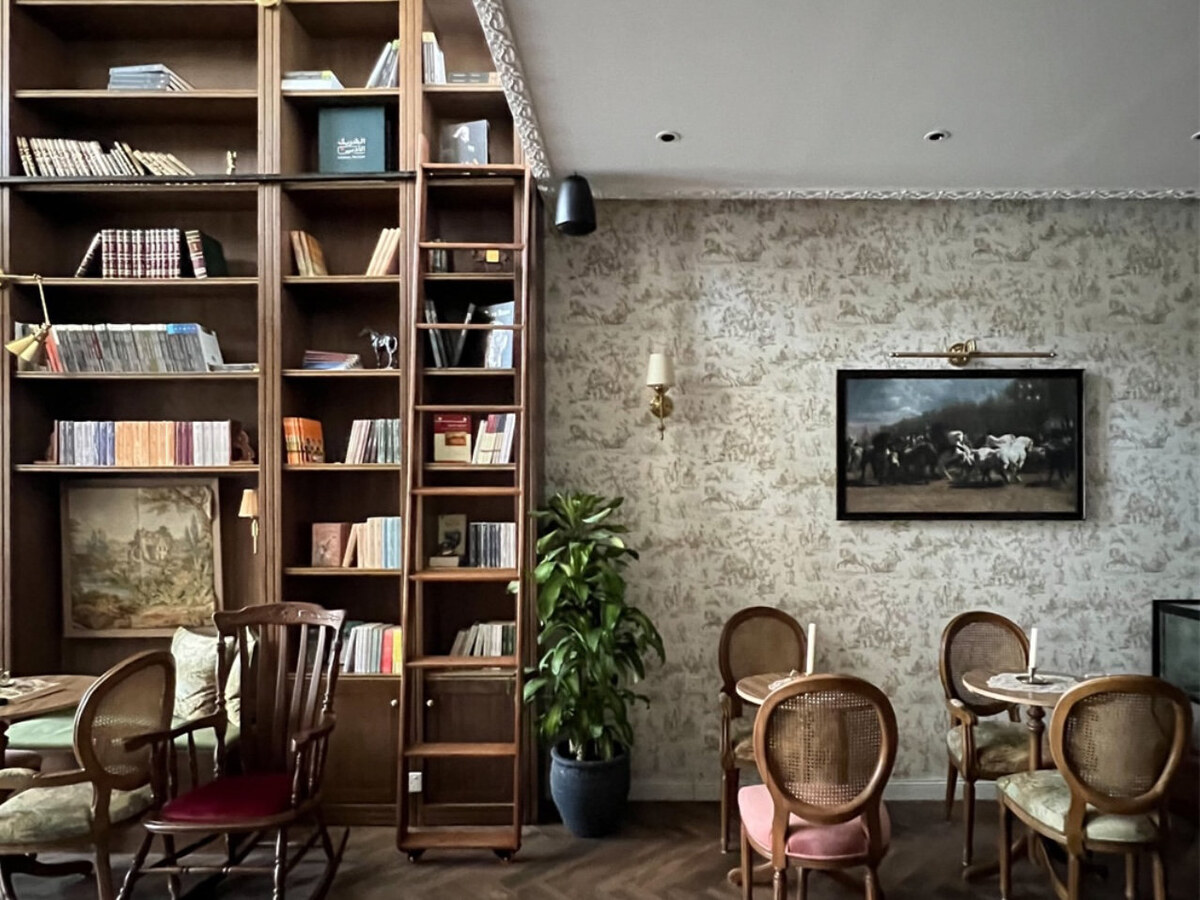Donia Bijan’s debut novel, “Last Days of Café Leila,” is the story of a woman attempting to find herself by rediscovering her family history and her roots: Her native Iran, her parent’s home, and her family’s beloved Café Leila.
Bijan herself left Iran in 1978 and ran a restaurant in Palo Alto, California, for 10 years, so there are clearly some autobiographical touches in the novel.
Run by three-generations of the Yadegar family, Café Leila has stood throughout Iran’s political turmoil and its effects on the country and its people. It is a powerful novel about family, strength, and resilience that sweeps the reader into Tehran and into the lives of the Yadegars from the early 1930s to the present day.
Behzod (Zod) Yadegar, the café’s second-generation owner, is in Tehran waiting for the postman to deliver a letter from his daughter, Noor. But sometimes letters from America can take two or three weeks to arrive.
Meanwhile, Noor, a nurse in San Francisco, has left her husband of 16 years, due to his infidelity, and moved into an apartment with her teenage daughter. Eventually, unable to pull herself out of the hole she has fallen into, Noor writes to her father and asks her if she can come back home.
This is when the story moves to Tehran and Café Leila.
“In a cul-de-sac at the end of Nasrin Street, quiet except at the hour when the kindergartners at Firouzeh Elementary were set free, sat a faded yellow brick building detached from its neighbors. Here, beneath a recessed sign, was Café Leila, its entrance framed in a low-hanging wisteria in full bloom.”
Within the confines of Café Leila, its garden and the now-obsolete Hotel Leila are Zod; 85-year-old Naneh Goli — Zod’s old nanny; waiters Hedayat and Aladdin who “still wore the same faded dark blue jackets with gold-fringed epaulettes, making them look like retired generals;” cousin Soli, who joined the staff after the war; and Karim, a young orphan apprentice who does odd jobs around the complex when not in school. With the exception of Soli and Karim, these are all the people Noor left behind nearly 30 years ago.
Bijan sensitively contrasts Noor’s San Francisco and Zod’s Tehran. In America, there is cautious comfort, a beauty Noor recognizes, but from which she feels disconnected. In Tehran there is a familiarity, a certain sense of calm, despite the troubles and fear of political edicts.
Bijan also contrasts the emotions of mother and daughter. Lily, born and raised in America, is furious about their move. She has never visited Iran and does not speak the language. But Noor realizes her life in San Francisco had left her feeling empty, and finally feels a sense of belonging. “The world changed around Café Leila, but the life that had gone on there since the 1930s continued,” Bijan writes. The café is the glue that holds three generations together.
In every corner of the house, restaurant and garden are bits and pieces of Noor’s life, as well as the lives of her brother Mehrdad, her parents and her Russian expat grandparents who first opened the café. Noor embraces that past as the Café does — a history spanning generations. The small orchard of pomegranate, almond and mulberry planted by Noor’s grandfather Yanik, for instance, “Year after year they blossomed, filling the air with their sweet smell, regardless of political turmoil or the events on the street.” Through Yanik and Nina came a love for Iran and for Persian food that lives on through Zod and Noor.
Bijan’s story is a refreshing take on the immigrant experience — one that is filled with the discovery of culture and of delicious and inventive cuisine.
There is trouble for Noor and Lily in Tehran, in the form of restrictive laws and an ailing, elderly father, but somehow the two women manage to find themselves, or, in Lily’s case, another version of herself she was unaware existed.
“Last Days of Café Leila” is about cherishing the past and reclaiming spaces in both the physical and mental realms. It is about understanding oneself through one’s family and traditions. It is a journey that keeps Noor teetering on a line between her two roles of daughter to a sick father and mother to a defiant teenager.
Bijan writes beautifully of a homecoming, not only in terms of familial ties, but also the sensual experience: the trees, the sounds, the sights, and smells.
Café Leila is not just Noor’s childhood home, it is a place of refuge, healing, and a place of acceptance no matter status or creed.
Bijan leads her readers through a spectrum of emotions with an incredibly relatable story, especially for people who have had to leave their homes for whatever reason. Bijan, through Noor, sums up the story simply and powerfully: “(She) couldn’t do anything to change the conditions, she couldn’t deny her awareness and she couldn’t stand in the way of death or love. The only thing to do was to keep moving, to do something, to show courage, to give everything she was capable of giving.”
Book Review: The story of a woman on a quest to find herself
Book Review: The story of a woman on a quest to find herself

What We Are Reading Today: ‘The Machines of Evolution and the Scope of Meaning’

Author: Gary Tomlinson
In this groundbreaking book, Gary Tomlinson defines a middle path. Combining emergent thinking about evolution, new research on animal behaviors, and theories of information and signs, he tracks meaning far out into the animal world. At the same time he discerns limits to its scope and identifies innumerable life forms, including many animals and all other organisms, that make no meanings at all.
Riyadh’s literary havens: Where coffee meets the love of books

- City’s book cafes offer serene spaces for quiet reflection
- Carefully curated selections of Arabic and English titles on offer
RIYADH: Riyadh’s cultural landscape is undergoing a quiet transformation, where the love of coffee meets the timeless allure of literature.
Book cafes are carving out a niche as spaces where readers, thinkers, and coffee enthusiasts converge.
These havens of creativity and reflection offer retreats for the mind and soul, providing a sense of community in an increasingly fast-paced world.

The Book Club: Where stories find their home
Nestled in the Al-Yasmin district, The Book Club is a tranquil retreat for bibliophiles, particularly those passionate about Arabic literature.
Its shelves brim with carefully curated Arabic titles, from classics to contemporary gems, complemented by a modest selection of English books.
HIGHLIGHTS
• In Riyadh’s Al-Narjis district, Wathbah Coffee and Book’s floor-to-ceiling bookshelves, vintage-inspired decor, and intimate corners create a haven for readers and thinkers alike.
• Coffee Trees, tucked away in the Al-Rayan district, offers a sanctuary that blends greenery with literary charm.
The minimalist interior, adorned with soft lighting and intimate reading nooks, creates an atmosphere conducive to focus and relaxation.
What sets The Book Club apart is its browsing policy. Visitors are welcome to skim books for three minutes before deciding to purchase, with additional purchases granting extended reading time.

During Arab News’ visit, the cafe hosted a stimulating talk with Saad Al-Bazai, titled, “Historical Fiction: Why Do They Believe in the Imagined?”
Al-Bazai told Arab News: “These gatherings bring together a diverse audience and provide them with the opportunity to meet researchers.
“This undoubtedly supports cultural life as it creates a platform for dialogue that differs from social media platforms — it is vibrant, direct, and involves personal presence.”
Sophia: A library, a cafe, and a place to connect
Sophia has become a cornerstone of Riyadh’s literary scene, acting as a hub for knowledge, creativity, and meaningful connections.
Its towering wooden shelves are filled with a rich collection of Arabic and English books, carefully curated to cater to a diverse audience.

Beyond being a library, Sophia also serves as a publishing house, amplifying the voices of local and regional authors, bringing their stories to the forefront.
What sets Sophia apart is its dedication to fostering intellectual growth and cultural exchange.
The space regularly hosts book launches, discussion panels, and thought-provoking dialogue sessions that bring together writers, readers, and thinkers from various backgrounds.
The inviting ambiance, complete with warm lighting and cozy seating, creates the perfect backdrop for these events, making each visit an enriching experience.
Aminah Al-Hassani, a loyal visitor, captured the essence of Sophia. She said: “The place is calm and serene, and it has never let me down with a bad book.
“Every book I’ve read here has been better than the last. Their selections are beautiful, and the events they organize are always beneficial and enjoyable.”

Coffee Trees: A green sanctuary
Coffee Trees, tucked away in the Al-Rayan district, offers a sanctuary that blends greenery with literary charm. The cafe’s lush decor, accentuated by vibrant plants and natural elements, transforms the space into a botanical retreat.
Though its library is modest, the curated selection of books is perfectly aligned with the cafe’s serene ambiance.
Patrons often find themselves lost in thought or pages, surrounded by the aroma of ethically sourced, expertly brewed coffee.
Whether it’s the tranquil environment or the commitment to sustainability, Coffee Trees is a favorite escape for those seeking a moment of calm in the city.

Wathbah Coffee & Book: Where timeless charm meets literature
In Al-Narjis district, Wathbah Coffee & Book exudes intellectual allure. Its floor-to-ceiling bookshelves, vintage-inspired decor, and intimate corners create a haven for readers and thinkers alike.
The carefully selected collection spans genres and eras, ensuring there’s something for everyone.
Wathbah’s ambiance is perfect for quiet reading, reflective conversations, or simply soaking in its aesthetic beauty.
As Sara Al-Ebraheem, a loyal patron, said: “There’s a certain magic in time spent in the company of good books, with a perfectly brewed coffee.”

Ons Coffee Roasters: Where simplicity meets serenity
Ons Coffee Roasters offers a minimalist haven for those who crave peace and simplicity. Its clean design, complemented by tasteful art and cozy seating, creates a calm environment perfect for unwinding.
While its library may be small, the books displayed are thoughtfully chosen to inspire reflection and curiosity.
Ons Coffee Roasters is as much about quality as it is about serenity. Its expertly brewed coffee elevates the experience, making it an ideal retreat for anyone seeking a quiet corner in Riyadh.

A cultural renaissance in Riyadh
The emerging popularity of book cafes is providing spaces where literature, art, and community thrive. The cafes cater to a growing audience of residents and visitors who value meaningful connections in an increasingly digital world.
What We Are Reading Today: ‘Mathematical Methods for Geophysics and Space Physics’ by William I. Newman

Graduate students in the natural sciences—including not only geophysics and space physics but also atmospheric and planetary physics, ocean sciences, and astronomy—need a broad-based mathematical toolbox to facilitate their research.
In addition, they need to survey a wider array of mathematical methods that, while outside their particular areas of expertise, are important in related ones.
This authoritative and accessible book covers everything from the elements of vector and tensor analysis to ordinary differential equations, special functions, and chaos and fractals.
What We Are Reading Today: ‘The Owl and the Nightingale’

Author: SIMON ARMITAGE
“The Owl and the Nightingale,” one of the earliest literary works in Middle English, is a lively, anonymous comic poem about two birds who embark on a war of words in a wood, with a nearby poet reporting their argument in rhyming couplets, line by line and blow by blow.
In this engaging and energetic verse translation, Simon Armitage captures the verve and humor of this dramatic tale with all the cut and thrust of the original.
International Prize for Arabic Fiction announces 2025 longlist

DUBAI: The longlist for the 2025 International Prize for Arabic Fiction has been revealed, with 16 novels in the running for the $50,000 award, sponsored by the Abu Dhabi Arabic Language Centre.
While works from Bahrain and Mauritania have made the list for the first time, other nominated novels come from Egypt, Syria, Lebanon, Algeria, Iraq and the UAE.
The longlist has been chosen from a total of 124 submissions by a panel of five judges chaired by Egyptian academic Mona Baker. Joining her on the panel are Moroccan academic and critic Said Bengrad, Emirati critic and academic Maryam Al-Hashimi, Lebanese researcher and academic Bilal Orfali, and Finnish translator Sampsa Peltonen.
In a statement, Baker said, “This year’s longlist is remarkable in its diversity of both theme and literary form. Some novels address women’s struggles to achieve their dreams in a patriarchal society that prevents them from living fulfilled lives. Others offer a nuanced portrait of religious and sectarian worlds, where extremism and dogma contrast with human empathy and understanding.
“There are a number of historical novels on the list which deal with both the recent and more distant past, such as the Abbasid era, or the Inquisition and persecution of Muslims in Andalusia. There are also semi-autobiographical books, and others which read like detective stories.
“Repressive regimes and their power to crush the hopes and lives of ordinary people are also explored; some novelists paint a stark picture of this reality, while others employ sarcasm and humour, rendering these difficult topics more accessible for the reader.”
The 2025 International Prize for Arabic Fiction longlist:
Aqeel Almusawi’s “The Weepers” (Bahrain)
Inam Bioud’s “Houwariya” (Algeria)
Rashid Al-Daif’s “What Zeina Saw and What She Didn’t” (Lebanon)
Ahmed Fal Al-Din’s “Danshmand” (Mauritania)
Jan Dost’s “The French Prisoner” (Syria)
Sausan Jamil Hasan’s “Heiress of the Keys” (Syria)
Iman Humaydan’s “Songs for the Darkness” (Lebanon)
Azher Jirjees “The Valley of the Butterflies” (Iraq)
Hasan Kamal’s “The Stolen Novel” (Egypt)
Taissier Khalaf’s “The Andalusian Messiah” (Syria)
Ahmed Al-Malawany’s “Happy Dreams” (Egypt)
Mohamed Samir Nada’s “The Prayer of Anxiety” (Egypt)
Nadia Najar’s “The Touch of Light” (United Arab Emirates)
Haneen Al-Sayegh’s “The Women’s Charter” (Lebanon)
Sumar Shihada’s “My Life Has Just Begun” (Syria)
Ayman Ragab Taher’s “The Lamplighter” (Egypt)


















